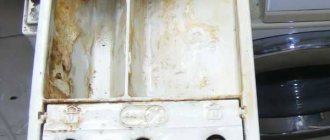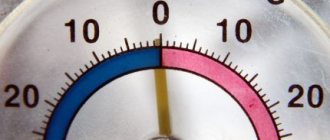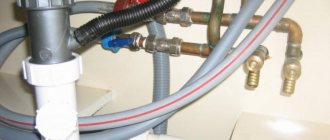If you think that a washing machine is a modern object, then you are mistaken! The first washing machine for the home appeared in 1874, and the first automatic unit appeared in 1949. It was created by a male inventor and was an incredible gift for his wife (of course!).
Today, a washing machine is a must-have for any family. She is also the sponsor of your TV series viewing, pleasant evening walks or gatherings with board games with friends. Why? Just believe me, if you had to wash your clothes and bed linen yourself, you wouldn’t have time for TV series and board games!
Like any thing, washing machines break down quite often, so they sometimes need to be replaced, which means they will have to be taken either from a hardware store or from another apartment if you borrow a washing machine from friends or buy it second-hand on the Internet. There are also moves during which it is especially important to transport equipment carefully. There are quite a few situations where transportation of a washing machine is required, and the process requires strict adherence to the rules - otherwise the machine can be damaged. We tell you what you need to know when transporting a washing machine so that everything is in order with it.
Improper transportation of the washing machine: main consequences
A washing machine is a metal body, a drum inside and a bunch of electronics. There is something to break here. Here are the main points:
- the power cord may be damaged, which will lead to incorrect voltage supply and damage to the machine;
- during transportation, you can hit the body of the machine or drop it entirely, which will cause visible external defects, and can also damage settings and mechanisms;
- if transported with an unsecured door, the cuff may be damaged and such a machine cannot be used;
- among other things, rupture of hoses and pipes is possible;
- In case of careless transportation, the hatch fastenings may become chipped;
- and displacement of the drain pump will result in improper operation of the machine when washing clothes and can lead to flooding of the apartment.
What needs to be done to avoid this? Properly prepare the washing machine for transportation and transport it correctly.
Video
From the following video you will find out whether it is possible to transport a washing machine on its side, and also familiarize yourself with the rules for carrying and transporting the unit.
She graduated from the Institute of Tourism of the Federal Pedagogical University with a degree in Management, loves to travel and communicate with people. She is interested in psychology, enjoys dancing, and studies English. During the five years of maternity leave, I thoroughly mastered housekeeping, not forgetting about my own development. He skillfully uses words and can support a conversation on any topic thanks to his interest in different areas of life.
Found a mistake? Select it and click the buttons:
Ctrl + Enter
4.8571428571429 Rating 4.9 (14 votes)
Interesting!
For washing small items on the road or in a hotel, it is convenient to use a regular plastic bag. Socks or tights are kneaded inside a tied bag along with water and a small amount of detergent. This method allows you to pre-soak things and wash them without damaging the fabric or wasting a lot of powder and water.
History knows the fact that a kitten fell into the drum of a washing machine and, after going through a full wash cycle on the “Wool” program, got out of the unit unharmed. The only trouble for the pet was an allergy to washing powder.
In the 19th century, washing ladies' toilets took a lot of time. The dresses were first ripped open, and then each part was washed and dried separately so that the fabric did not become deformed. After washing, the clothes were sewn again.
There are a variety of balls that are used in the washing machine. Antistatic ones will prevent the fabric from sticking to the body after washing, balls with special loops will “comb” the lint and prevent the appearance of pills, and silicone ones with pimples will prevent fluff from matting when washing outerwear.
Washing machines have something to do with the origin of the expression “money laundering.” In the 1930s, American gangsters used a network of laundries as a cover for their illegal activities. By passing off the proceeds of crime as proceeds from cleaning clothes, they turned “dirty” money into “clean” money.
Astronauts, while in Earth orbit, solve the problem of dirty things using an original method. Clothes are dropped from the spacecraft and burn up in the upper atmosphere.
There is a washing machine “for bachelors”. Linen washed in such a unit does not need to be ironed at all! The thing is that the device does not have a drum: some things can be placed inside the container directly on hangers (for example, jackets and shirts), and smaller things (for example, underwear and socks) can be placed on special shelves.
The first officially patented washing machine was made of wood and was a box with a frame, half filled with wooden balls. Laundry for washing and detergent were loaded inside and the frame was moved using a lever, which, in turn, made the balls move and grind the laundry.
Washing machines equipped with the “No Iron” or “Easy Iron” functions can wash clothes with little to no wrinkling. This effect is achieved through a special approach to spinning - it is performed at low speeds, with long pauses, and a small amount of water is retained in the tank.
The ideal conditions for transporting the washing machine are a vertical position, complete absence of liquid inside, fastening the drum with shipping bolts and original packaging. This is written in the instructions, and it’s easy to understand without it. There is no problem if you purchased a new device, which will be delivered by the store’s delivery service. But what if transportation is needed afterward and there is no suitable transport available? And by that time the packaging was already unusable.
Two options:
- contact a company that professionally transports washing machines. There is nothing to explain here, call and negotiate;
- I want to save money, because I have a spacious passenger car. Let's talk about this in more detail.
Preparing the washing machine for transportation: main steps
1. Disconnect the washing machine from the power supply. Roll up the cord and tape it to the body to keep it from dangling.
2. Disconnecting the drain hose. There is always some amount of water left in the hose, so after disconnecting, be sure to check this and drain the remaining water into a container. Then carefully roll up the hose and secure it with tape on the body or put it in a box. There should be no water inside the machine, as during transportation it can accidentally flood important electrical circuits.
3. Drain pump plug. After you have drained the water from the hose, it may still remain in the tank of the car, and even this small amount is enough to damage the microcircuits in the control panel. To avoid damage, be sure to unscrew the cap before transportation and drain any remaining water if there is any in the tank, and then leave the hole for the hose and the hatch open to allow the machine to dry inside.
4. Fixing the drum. How to secure the washing machine drum during transportation so as not to damage the unit? The shipping bolts will help you: they should have remained after purchasing the machine, take them out and screw them into the special holes located on the back wall of the washing machine. If there are no bolts, then you can secure the drum using improvised means - foam rubber, soft, clean rags or polystyrene foam. Unscrew the fastenings of the top panel of the machine, lay the material and then fasten the panel back. Securing the washing machine drum during transportation is a very important step; if you skip it, you risk seriously damaging the machine and causing expensive repairs.
5. Packaging. How to pack a washing machine before moving? Factory packaging will help here - thick cardboard and foam blocks. If there are none left, then you should use protective foam and stretch film. Your task is to protect the case as much as possible from vibrations and mechanical damage. Secure the machine hatch and powder cuvette with tape. Carefully wrap the washing machine with stretch film or bubble wrap. When you load the car into the truck, lay a blanket or bubble on the floor - this, firstly, will better fix the position of the car, and secondly, will protect it from falling.
Some subtleties of transportation
Remember that the machine must not be turned over. It is better to carry her on her side or on her back than upside down. A certain amount of water will definitely remain inside, which can flow onto the panel responsible for general control. Repair work will be expensive in this case, so it is best to dry the machine thoroughly.
By the way, moisture can accumulate in the detergent tray. It is recommended to remove it and transport it separately from the main device. If this is not possible, wipe it with a dry cloth.
Remember that you can put all models and brands of cars on the back wall, except Zanussi. It is in it that the weighted counterweight elements are located so that in the given position “on the back” they are capable of damaging the valve responsible for water intake.
Definitely do not place the machine on the front wall. During transportation you will damage the loading hatch and rubber seal.
Loading rules when transporting a washing machine
Transporting a washing machine with loaders is the best transportation option, because the machine can weigh quite a lot, and you won’t be able to handle it yourself. In Moscow, you can order a car to transport a washing machine along with loaders; all you have to do is pack the unit and make sure that the car is loaded according to the rules.
For example, you can only take a washing machine out of the apartment straight away, without turning it over; if you need to tilt the unit, it is better to do it slowly and with a small degree of tilt. Inside a truck van, it is better to place the car sideways in relation to the traffic and, of course, securely secure it.
Manufacturers of household appliances advise transporting units while standing. Is it possible to transport the washing machine on its side? After all, it is not always possible to place it exactly vertically. Yes, it is possible to transport the washing machine on its side, but at the bottom there must be a side panel that is closer to the powder cuvette or a rear wall. The same recommendations apply to transporting the washing machine lying down.
And in order not to drop a heavy unit on the way to or from the car, it is best to use a special cart for transporting washing machines.
Features of moving the automatic device in a standing position
The opinions of most experts agree that the best option when transporting an automatic washing machine is a vertical position. In this case, before moving, you should fix the drum using special bolts. Loading into a vehicle must be carried out with the automatic machine in a side position. If there are other large objects in the truck bed, the washing device should be clamped between them.
When transporting the unit, it is not recommended to turn it upside down. This option is permitted provided that all moisture and the engine are removed from the device.
What to do after transporting the washing machine and what absolutely should not be done
After the car has been brought into the house, it must be unpacked. Carefully unfold the film, peel off the tape from the hatch and powder cuvette, unroll the hoses and cord. Of course, unscrew the transport bolts. To make it convenient for you to transport the machine next time, leave the bolts directly on the back wall - this way they will definitely not get lost. Check that the surface on which the washing machine stands is absolutely level, free of moisture, and that the unit is standing straight and stable. Carry out an external inspection of the equipment: whether there is any damage to the body, chips, whether the powder cuvette is installed correctly, whether the hatch closes and opens tightly. Now you can connect the hoses, turn on the machine and check if everything works as it should.
After transporting the washing machine, you must not:
- park the car on a wet or uneven floor;
- plug in the machine if the cord or drain hose has been damaged during transportation;
- use the machine with a damaged cuff or drum.
Bonus: where to buy shipping bolts if you don’t want to disassemble the machine
If the washing machine is still under warranty or you do not want to disassemble it, you can simply buy shipping bolts. Here are a few places to look for original washing machine bolts:
- From the washing machine manufacturer . Try contacting the customer support hotline or emailing the manufacturer - they can often send shipping bolts even for free.
- In construction stores . Most likely, the necessary bolts can be found in fastener and hardware stores. But there is a chance that you will have to measure the diameter yourself - the seller is unlikely to know what will fit your washing machine.
- In workshops and service centers for repairing washing machines . In the workshops of experienced repair specialists, a whole mountain of transportation bolts often accumulates. There is a particularly high chance of finding suitable fasteners in authorized service centers of the washing machine manufacturer.
- On bulletin boards. Perhaps someone is selling unnecessary shipping bolts specifically from your model - most likely, they will cost less than from the manufacturer.
In more detail - what damages do violations of transportation rules lead to?
During transportation, unforeseen situations may occur: for example, the washing machine will be too heavy and unprofessional movers may drop it. The machine can hit the walls or doors of the elevator, and if positioned and transported incorrectly, the internal mechanisms may fail, as well as damage to the drum, drain pump and other elements. Let's list possible breakdowns if the washing machine is transported incorrectly in addition to those discussed at the beginning of the article:
- broken drain hose;
- if the conditioner and powder compartment has not been secured, it may fall out and break;
- mechanical damage or incorrect position during transportation will break the control panel - the buttons will stop working, the machine will not carry out the given commands;
- if there is liquid left in the machine, then during transportation it can get into the mechanisms, electrical wiring of the unit and lead to a short circuit when the machine is connected to the electrical network;
- pipes and hoses may break if they are not packaged and securely fastened to the body of the washing machine;
- if the drum is not secured, the cuff may tear;
- if you do not fasten (or fasten incorrectly) the door of the washing machine, it may stop closing correctly - it is absolutely forbidden to operate such a unit;
- If there is no packaging or careless loading, the body of the unit may be damaged - chips, dents, scratches and other external damage.
Mobile air conditioner packaging
Please note: If you still have the shipping packaging: the box and all the necessary protective equipment, it is best to use it.
The prepared floor air conditioner must be packed well so that it does not receive damage during transportation. The optimal packaging for air conditioner is bubble film
Wrap the device with it, paying special attention to the corners, then securely secure the film with regular tape.
If there is no special bubble film for transportation, you can use regular cardboard, creating some kind of makeshift box. It would be a good idea to place soft rags or towels between the cardboard and the device.
Transport your washing machine with the help of professionals - Attic!
Transporting a washing machine yourself is long and difficult. In any case, you will need the help of relatives or friends, and you will also need to order a truck, since not a single unit will fit in the trunk of a car. To avoid improper transportation, unnecessary breakdowns and, as a result, spending extra money on repairs, it is best to turn to professionals.
You can order the transportation of a washing machine in Moscow from Attic. Place an order on the website, by phone, on social networks or through the app - we will come and do everything ourselves: we will carefully and securely pack the unit, load it into the car, transport it and put it in a new place.
Advantages of the Attic
Attic is a professional moving company; we constantly work with large household appliances and know all the nuances of their transportation. In addition to professionalism, you also receive super comfortable service:
- a convenient application where you can place an order in one click;
- We have friendly movers (a whole team comes) and they are always ready to help;
- We bring the packaging with us and pack the equipment ourselves - you don’t need to do anything in advance;
- We have a fixed price for transportation, which will not change during the process;
- The attic is not only about moving, but also about storage: if something goes wrong, then things can always be left in our warm warehouse.
And of course, Attic movers know all the rules: they will check whether there are bolts to secure the washing machine drum during transportation, and if there are none, then they will make sure that the transportation of the washing machine without transportation bolts is carried out correctly. After all, it’s not for nothing that they always have 15 types of packaging materials with them!
Expert advice
If the machine needs to be lowered from a multi-story building, you will have to try not to turn it over. Knowledgeable people assure that the device descends only in a vertical state, only slight inclinations are allowed. Such carrying is impossible for one person, so several people will be required for such an operation. The fact is that during careless carrying or installation the machine can be easily damaged.
It is not recommended to drag the washing machine around. There is a possibility of not only damage to the floor covering, but also to the body of the unit. The shape of the machine is streamlined, there are no additional handles for carrying, so you will have to tilt it a little whenever you move it. Before performing such “maneuvers,” it is better to enlist the help of another person who will secure the device from the opposite side.
If you don't have bolts to secure the drum, you can purchase them at a hardware store.
No panic or risk
A washing machine is an expensive thing! And it’s not even about money, but about your free time and comfort. Even a couple of days without a washing machine will seem very unpleasant to you, why take the risk? If you bought a new car in a store or online, or are moving to a new place, entrust the transportation to professionals who will transport the unit carefully and safely, and you won’t have to break your back and worry about the safety of the car. Attic - for comfort and professionalism. In everything!










